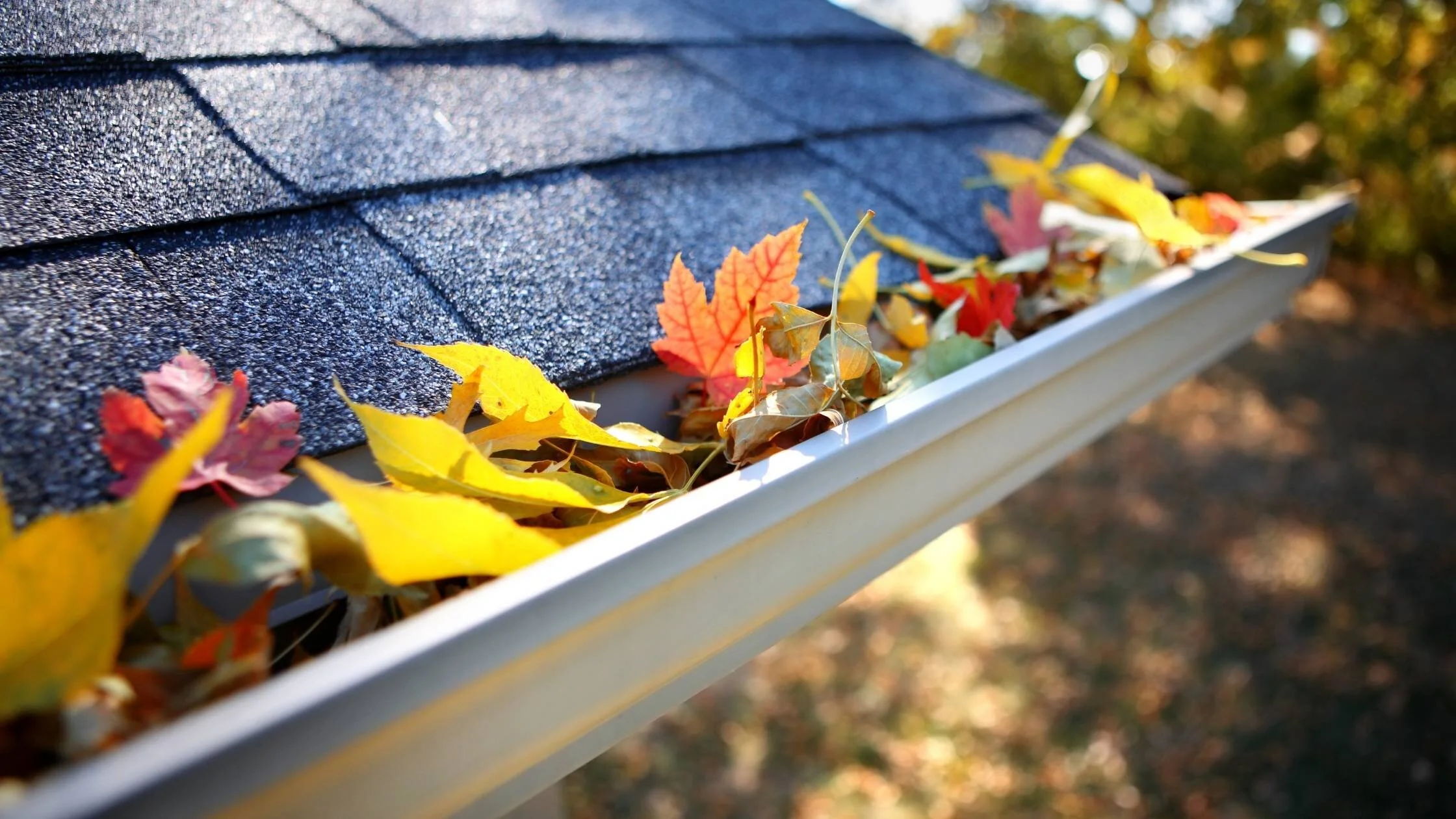It's fall! And it's time to prepare our homes for the rainy, stormy, snowy winter. Gutter cleaning and repair should be one of the top priorities this season, and here are some ways to keep your roof draining A-ok all winter long.
Rain gutters are in place to move water away from the base of your house. And when they fail to do so, not only can you wind up with a wet basement, but it can damage your foundation. It also poses other problems that may cause various health effects, like mold and mildew growth inside your home.
Depending on the material, gutters generally last from 10 to 100 years, with copper the toughest (and priciest) available. With that said, a leak does not automatically mean it is time to replace your rain gutters.
Get rid of leaves and other debris
Your plumber’s snake is an excellent tool for pulling clumps of wet leaves out of clogged downspouts.
A trusty old plastic spatula makes a great tool for cleaning debris from gutters. It doesn’t scratch up your gutter and can be cut with snips to fit into the contours.
Check for holes and cracks
Due to rust and general wear, it is common for gutters to develop small holes and cracks where the sections screw together. You will spot drips coming down from the joints.
While not a permanent fix, you can apply silicone or rubber gutter caulk sealant. This can get you another season or two out of your gutters. Squeeze into holes and cracks, applying another coat around the entire gutter.
Tighten up loose gutters
As gutters age, they often start pulling away from the roof, allowing water to drip over the sides or on the walls. Often, this is due to the gutter fasteners rusting or loosening after years of water exposure and extreme temperature changes.
While the sags are easy to spot, there are often "subtle" cases, in which you may need a bubble level to check several spots through the leaky gutter section.
If it seems like the gutter is loose, check the gutter fasteners. In most homes, these come as either spikes or clips. There should be no more than a ¼-inch drop in the direction of the downspout.
If spikes hold your gutters, hammering it back won't solve the problem as it eventually tends to work its way back out. Replace the spikes with thicker and longer nails (about 7-8 inches long) or a long screw for maximum hold.
If your gutters are fastened with clips or brackets, check for broken clips or loose screws. Replace broken clips with new ones (you will find gutter clips in most home improvement depots). Use a screwdriver to fasten the clips to the fascia along the roof. The screws should be at least 2 inches long to hold the gutter in place.
Seal leaking end caps
Even if your home has seamless gutters, the end caps will inevitably leak. If that time has arrived:
Scour off oxidation around the seam or end cap with a scrub brush or coarse steel wool.
Rinse with water and let the area dry.
Squirt a bead of sealer around the seam or end cap and work it in with a gloved finger.
Let it dry.
Install gutter heating products
Adding roof heating cables is a good idea if you live in a place that gets really cold in the winter, as it helps prevent ice dams. There are heated cables on the market specific for rooftops and gutters. The fall season is about right for installation, as it’s mostly dry outside and safe to use a ladder.
Secure the cables with brackets, on the shingles where the roof cable bends. Run the cable along the inside of your gutter and down the downspouts, and plus into a GFI outlet.
Add gutter guards
Adding a gutter cover will reduce the amount of debris entering your gutter system. Start by clearing your gutters with a scoop and bucket (to avoid leaving a trail of debris around your house).
Once you have eliminated the leaks, keep your gutters in good shape with these tips:
Clean rain gutters each spring and fall, removing fallen leaves and grunge.
Sweep heavy loads of fallen leaves off your home’s roof, as these are likely to make their way into the gutters.
Consider installing quality leaf guards or mesh over the gutters if your home is surrounded by a lot of deciduous trees.
Inspect rain gutters annually for cracks, holes, loose or missing screws, and other damage. It’s better to fix problems right away, rather than wait until you find your gutters leaking.
Check downspouts whenever you clean your rain gutters. Run water into the gutter at the top of the downspout, and watch the drainage at the bottom. If water backs up out of the downspout, instead of easily draining, remove the downspout’s base—this will generally slip off—and use a broom handle or long stick to dislodge leaves and other debris from inside the downspout. You might need to run a strong blast of water from your garden hose to dislodge stubborn blockages.
If the downspout is loose, replace or reattach the downspout straps, which are metal brackets that screw into the side of the house to hold the downspout in place. You’ll find downspout straps for under $5 at most home improvement centers or online at Amazon.
These easy DIY projects can help you whip your home into shape. Is your home way past DIY repairs?
Ash Creek Properties provides homeowners with no-hassle opportunities to sell their homes for cash and with no repairs or stress of a home inspection. If you are from Portland, Beaverton, Saint Helens, and McMinnville, Oregon, contact Ash Creek below for an all-cash offer.

